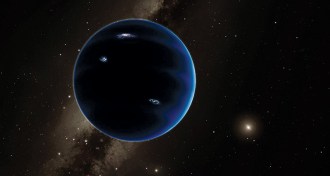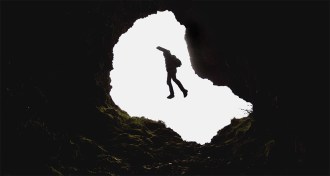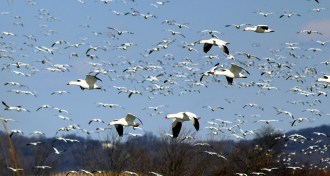News
-
 Anthropology
AnthropologyNew dating suggests younger age for Homo naledi
South African fossil species lived more recently than first thought, study suggests.
By Bruce Bower -
 Planetary Science
Planetary ScienceNew clues in search for Planet Nine
Lots of unknowns remain as researchers try to pin down where a possible ninth planet might be hiding in the solar system.
-
 Life
LifeLetting parasites fight could help battle drug resistance, too
Helping one strain of malaria trounce another in lab mice demonstrates a way of avoiding the evolution of drug resistance.
By Susan Milius -
 Climate
ClimateWarming alters mountain plant’s sex ratios
Global warming has different effects on male and female plants. Tracking sex ratio shifts could be a fast signal of climate change, researchers say.
-
 Animals
AnimalsFrigate birds fly nonstop for months
The great frigate bird can fly for up to two months without landing, thanks to a boost from wind and clouds.
-
 Physics
PhysicsFalling through the Earth would be a drag
Scientists study how friction affects a hypothetical jump through the center of the Earth.
-
 Paleontology
PaleontologyParasites wormed way into dino’s gut
Tiny slimed tunnels in the guts of a 77-million-year-old duck-billed dinosaur fossil offer the first hard evidence that dinosaurs may have been infected by parasitic worms, paleontologists say.
By Meghan Rosen -
 Health & Medicine
Health & MedicineTight spaces cause spreading cancer cells to divide improperly
Researchers are using rolled-up transparent nanomembranes to mimic tiny blood vessels and study how cancer cells divide in these tight spaces.
-
 Quantum Physics
Quantum PhysicsQuantum fragility may help birds navigate
Birds’ internal compasses may rely on the delicate nature of the quantum world.
-
 Astronomy
AstronomyPossible perp found in mystery of Milky Way’s missing galaxy pals
Billions of years of supernovas could explain why galaxies like the Milky Way have so few tiny companions and why those companions have so little mass.
-
 Life
LifeCities create accidental experiments in plant, animal evolution
To look for evolution in human-scale time, pick a city and watch a lizard. Or some clover.
By Susan Milius -
 Animals
AnimalsReptile scales share evolutionary origin with hair, feathers
Hair, scales and feathers arose from same ancestral appendage.